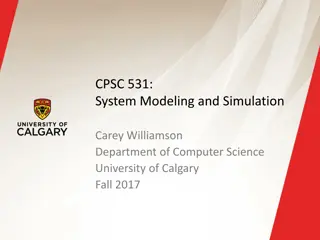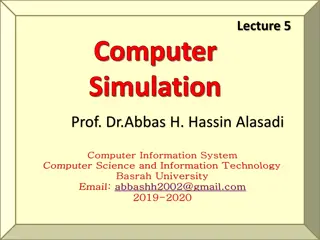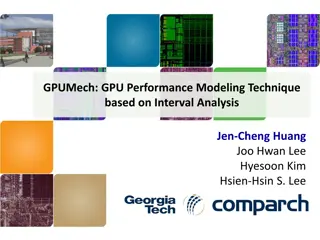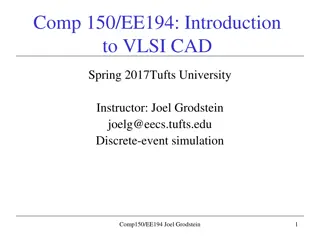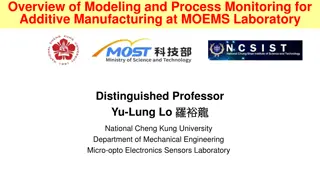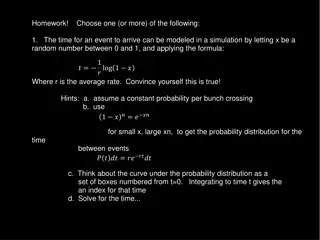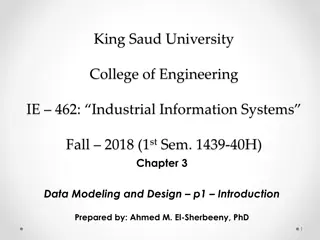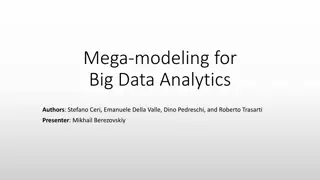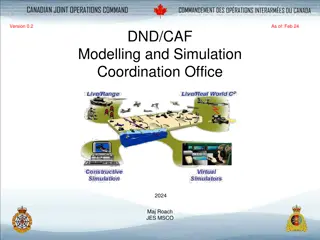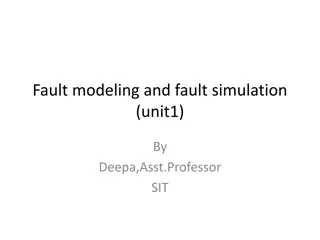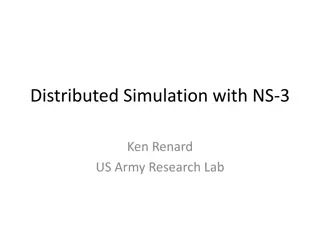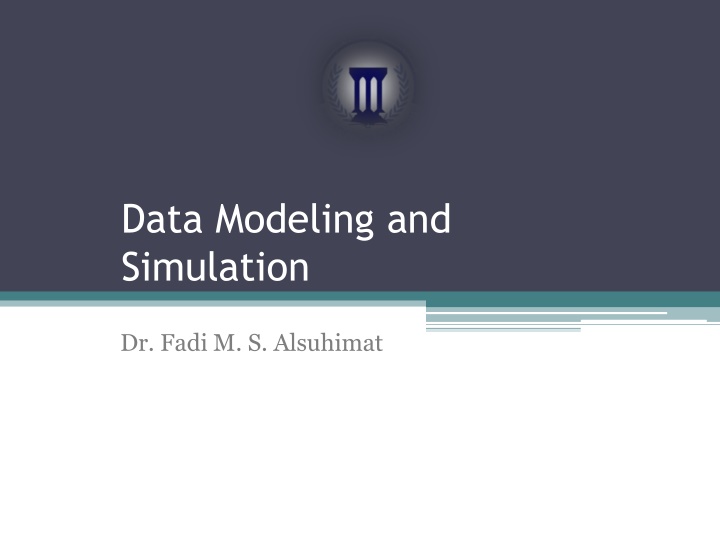
Data Modeling and Simulation by Dr. Fadi M. S. Alsuhimat
This presentation covers topics such as performance evaluation, simulation modeling, system taxonomy, terminology, simulation modeling development, advantages of simulation, and more. It delves into the concepts, processes, and benefits of data modeling and simulation in various systems and environments.
Download Presentation

Please find below an Image/Link to download the presentation.
The content on the website is provided AS IS for your information and personal use only. It may not be sold, licensed, or shared on other websites without obtaining consent from the author. If you encounter any issues during the download, it is possible that the publisher has removed the file from their server.
You are allowed to download the files provided on this website for personal or commercial use, subject to the condition that they are used lawfully. All files are the property of their respective owners.
The content on the website is provided AS IS for your information and personal use only. It may not be sold, licensed, or shared on other websites without obtaining consent from the author.
E N D
Presentation Transcript
Data Modeling and Simulation Dr. Fadi M. S. Alsuhimat
2 Recap: Performance Evaluation Performance Evaluation Performance Measurement Performance Modeling Analytic Modeling Simulation
3 Simulation Model Taxonomy (preview)
4 Terminology (1 of 2) A system is defined as a group of objects that interact with each other to accomplish some purpose A computer system: CPU, memory, disk, bus, NIC An automobile factory: Machines, components parts and workers operate jointly along assembly line A system is often affected by changes occurring outside the system: system environment Hair salon: arrival of customers Warehouse: arrival of shipments, fulfilling of orders Effect of supply on demand: relationship between factory output from supplier and consumption by customers
5 Terminology (2 of 2) Entity An object of interest in the system: Machines in factory Attribute The property of an entity: speed, capacity, failure rate State A collection of variables that describe the system in any time: status of machine (busy, idle, down, ) Event An instantaneous occurrence that might change the state of the system: breakdown
6 Simulation Modeling Develop a simulation program that implements a computational model of the system of interest Run the simulation program and use the data collected to estimate the performance measures of interest (often involves the use of randomization) A system can be studied at an arbitrary level of detail Quote of the day: The hardest part about simulation is deciding what NOT to model. - Moe Lavigne, Stentor, Summer 1995
7 Advantages of Simulation New policies and procedures can be explored without disrupting the ongoing operation of the real system New designs can be tested without committing resources for their acquisition Time can be compressed or expanded to allow for a speed-up or slow-down of the phenomenon under study Insight can be obtained about the interactions of variables, and which ones have the most impact on system performance Can obtain answers to What if questions
8 Disadvantages of Simulation Model building requires special training An important role for courses like CPSC 531!! Vendors of simulation software have been actively developing packages that contain models that only need input (templates), which simplifies things for users Simulation results can be difficult to interpret Need proper statistical interpretation for output analysis Simulation modeling and analysis can be time- consuming and expensive, both for the modeler, as well as in compute time (if not done judiciously)
9 When Simulation Is Not Appropriate When the problem can be solved by common sense When the problem can be solved analytically When it is easier to perform direct experiments When cost of simulations exceeds (expected) savings for the real system When system behavior is too complex (e.g., humans)
10 Common Mistakes in Simulation Poor (pseudo) random number generators Best to use well-known or well-understood generator Improper selection of seeds for PRNG Short periods; same seeds for all streams Inappropriate level of detail: More detail more time more bugs More parameters more accurate Improperly handled initial conditions (warmup) Improperly handled ending conditions (cooldown) Run-length too short to achieve steady-state Need proper output analysis, confidence intervals
11 Types of Simulations Monte Carlo simulation Time-stepped simulation Trace-driven simulation Discrete-event simulation Continuous simulation

